Hello from Morocco! I’m currently on holiday, so I’ve invited Leong Man Wei, founder of the ground-up initiative SayurStory to guest-write this week’s newsletter. As a Singaporean who was raised under the care of her parents and a migrant domestic worker from Indonesia, Man Wei founded this ground-up initiative with the intention of building a Singapore-based community with migrant domestic workers through gardening and cooking activities. If you would like to join SayurStory’s future events, or know someone who might be keen, please refer to SayurStory’s Instagram or Facebook. — Pamelia
Our Best Wrapped Secret
By Leong Man Wei
When I was one, Rini left her hometown in Jawa Timur, Indonesia to work as a domestic helper for my family in Singapore. In more than 20 years of living together, we have never addressed each other by name — I call her Auntie and she calls me Mei. Botok — grated coconut flesh and vegetables steamed in banana leaves — is one of Auntie’s favourite foods. She doesn’t say this out loud, but I can tell by the way she goes out of her way to gather ingredients and cooks it in bulk, so that she’s able to pull the individual parcels from the freezer to reheat when the craving hits. Though we’ve lived together for more than 20 years, it was only last year that I was invited into the kitchen to learn about her botok.
It all started when a member of the SayurStory community shared a photo of her botok, arousing my curiosity with its mixture of lamtoro (river tamarind or petai cina) and spiced coconut. I’d learnt from community members that you can only gather lamtoro from Singapore’s streets by foraging discreetly (foraging is an offence in Singapore), as no supermarket or pasar (market) sells it here. When I asked Auntie if she knew how to make botok, she corrected my pronunciation and exclaimed, “How do you know botok? Botok is my kampung (village) food!”
Given that the dish is traditionally wrapped and steamed in banana leaves, an ingredient that is uncommon in our home, it’s little wonder that Auntie found few opportunities to make botok in Singapore. Even though one could wrap the filling and steam it in baking paper, banana leaves are a must for Auntie. “Usually all botok use banana leaf to cook, because you want to taste the banana leaf flavour. If you want to steam without banana leaves, you can just put in metal container or glassware but that is just steamed mixed veggie, not botok! Of course the taste is different without banana leaves!”
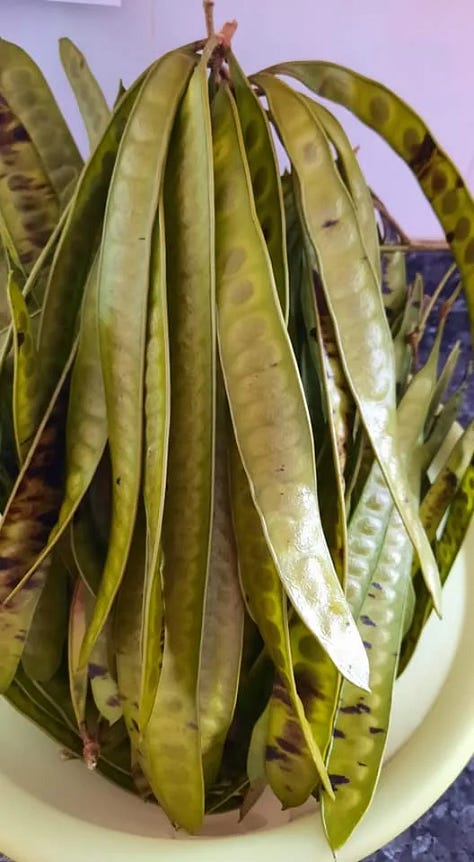
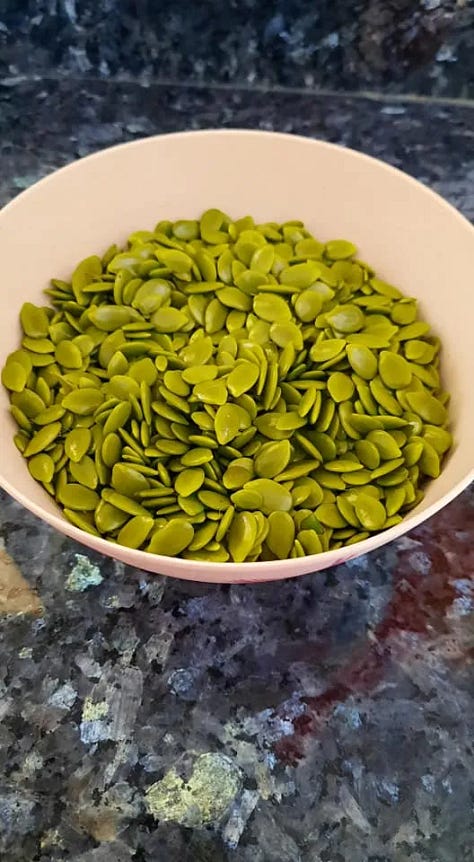
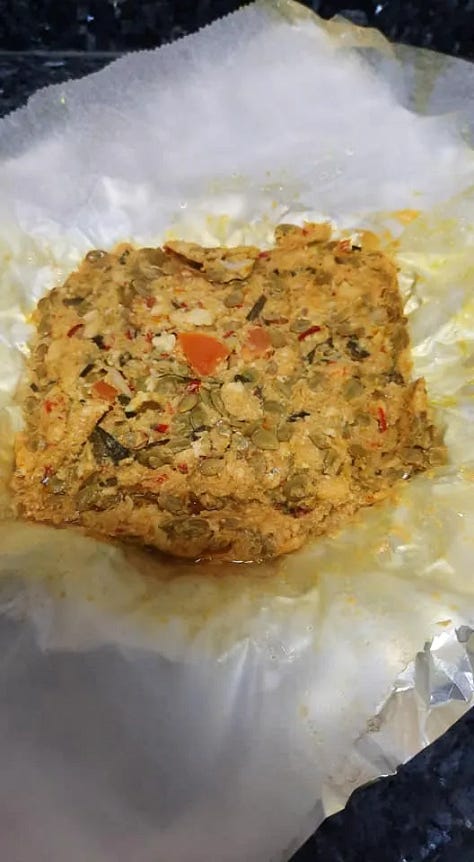
I suspected that part of the difficulty of making botok in Singapore was in procuring lamtoro, but Auntie was quick to correct me about botok’s varied ingredients and my perception of their inaccessibility. “Botok can make with anything, you don’t need lamtoro. Whatever you like and want, just mix with shredded coconut, tahu (tofu), and tempe (tempeh)... You know mengkudu (noni) leaf? The tree on our way home from the other side of the hill by the MRT? That young leaf also can cook for botok! You can put prawn, pete (petai), terong pipit (pea eggplant). Terong pipit, you know the plant also at the house beside the mengkudu (noni) tree? You can put sembukan (stinkvine or chicken poop vine). In Jawa, we call sembukan, in Bahasa Indonesia is daun kentut, or the ‘fart leaf’ in English. Lamtoro also can, but cannot mix everything together lah. If lamtoro, then mostly use lamtoro. If you mix everything together, how will the flavour be? So many things inside. That’s called chapalang (a random mixture), not botok!”
I was reminded that many ingredients for botok can be found all around our urbanised city if we knew how to look and had a reason to search. If we wanted banana leaves, for instance, there was little need to travel to the sprawling Tekka or Geylang Serai markets to purchase them. Nor was there a need to pay for the refrigerated ‘Thai Banana Leaves’ at NTUC supermarket. We could just ask those around us.
“I just ask my friend, she has a lot,” Auntie said casually when I wanted to learn about her banana leaf sources. To host gatherings with the SayurStory community, I had bought banana leaves several times from different markets. Each time, Auntie teased me for wasting money and offered to help me get leaves from her neighbourhood friends instead — but I didn’t want to inconvenience her friends whom I didn’t personally know. Since the leaves don’t cost so much, it’s more convenient to just buy. This was a thought that stood at odds with the way of life in Auntie’s hometown, “So many trees, every home and neighbour just ask and share!”
I never accepted Auntie’s offer until I found myself visiting three different markets and found all the leaves too tattered for use. Those who buy banana leaves from wet markets and supermarkets know that these are not always of the best quality. Depending on the time of the day that you go grocery shopping, the leaves could be yellowing, broken, or covered in a layer of soot. When I eventually resorted to asking for help, Auntie stepped out of our home and returned with a bundle of banana leaves, perfectly intact in their full length.
It took some courage, but I learnt to ask for banana leaves myself from those in our neighbourhood. This simple act became a way of introducing myself to neighbours, who responded generously in turn and opened their homes and gardens to me. Unsurprisingly, many carers of banana trees in my neighbourhood are Filipino and Indonesian domestic workers who ask me about my intended use for the leaves while offering me their best selections accordingly. They express surprise at my response, “How do you know botok? You have a kakak (elder sister)?”
One day, when I brought home some banana leaves for a SayurStory session, Auntie asked if she could use some. “You want to learn how to make botok right? I’ll show you how.” She stepped out and returned shortly with a bag full of mengkudu leaves and a sembukan vine, which I recognised immediately as the creeping weed along the road.
Auntie’s invitation for me to share her kitchen was based on the unspoken agreement that I would quietly observe, not ask so many questions, and try not to get in her way. Besides being a very small area, the kitchen is a space that Auntie has made her own over the years. She has designed invisible systems to make food-making intuitive for her; only she knows where and how different ingredients and tools are arranged in the family.
I hadn’t asked any questions while she prepared her botok mixture, but Auntie reminded me of her cooking and teaching style. “If you want a recipe with all the ingredients and their measurements, go search Google. You know me, I have no such recipe. What I make is also what I like, doesn’t mean other people like. Better they follow Youtube.” I stood by her side, watching her mix the diced ingredients together with disposable gloves. When Auntie wears gloves, it means she is handling food beyond a certain threshold of spiciness, like her ‘satan’s beehoon’ (the actual given name of one of her other favourite creations).
Just from watching, I could tell that Auntie has history with botok. She folded the leaves over themselves effortlessly, forming four perfect pouches in the same time that I spent struggling with my first. “Everyone knows how to make it, we make it in our homes. Cook alone for yourself, for family or neighbours. Everybody knows how to wrap with banana leaves, like you learn from school and just everywhere. If you just see, you can have your own ideas on how to do it too. Like chicken rice here, when did you first eat it, how did you learn to make?” Her last line carried ironic humour — we both know that I have never tried to cook chicken rice in my life but she has.
"How long do you steam them for?” I asked, as Auntie arranged the botok pouches to fit snugly in the same wok. “I can’t give you an answer in minutes and seconds,” I only understood at the end that we were looking for the leaves to turn from dark to yellowish green and tenderly soften around their contents. “I think most Chinese in Singapore think banana leaves are dirty. Only kampung food use banana leaves, restaurants won’t sell this kind of food. Except maybe Peranakan, they know how to use the banana leaf to make pretty kueh and all that, then people will buy.” I was shocked to learn she felt this way, but ruminating on my own interactions with family and other Chinese Singaporeans, I agree that banana leaves are not highly valued or sought after in our food cultures. There seems to be a general lack of exposure to banana leaves, and their trees in the whole, especially among younger generations. My family doesn’t intentionally seek out banana leaves in our food and surroundings, as I have learnt to from Auntie.
Botok is a dish that Auntie only makes when the rest of the family isn’t home. “None of them will like this kampung food lah, only you are weird,” she explained in between choked laughter and sniffles from the botok’s spiciness. Auntie is mostly reserved about her emotions and personal life with the family, but she is unrestrained when it’s just us two; it shows in the food that she makes for herself and shares with me. It has taken me 22 years to learn that botok was one of Auntie’s favourite foods, but better late than never. Until we meet again under the roof of her home in Indonesia, botok might be one of our best kept secrets in this home. “When you come to my place, you can have all the banana leaves you want,” Auntie jokes, filling me with both sadness and relief.






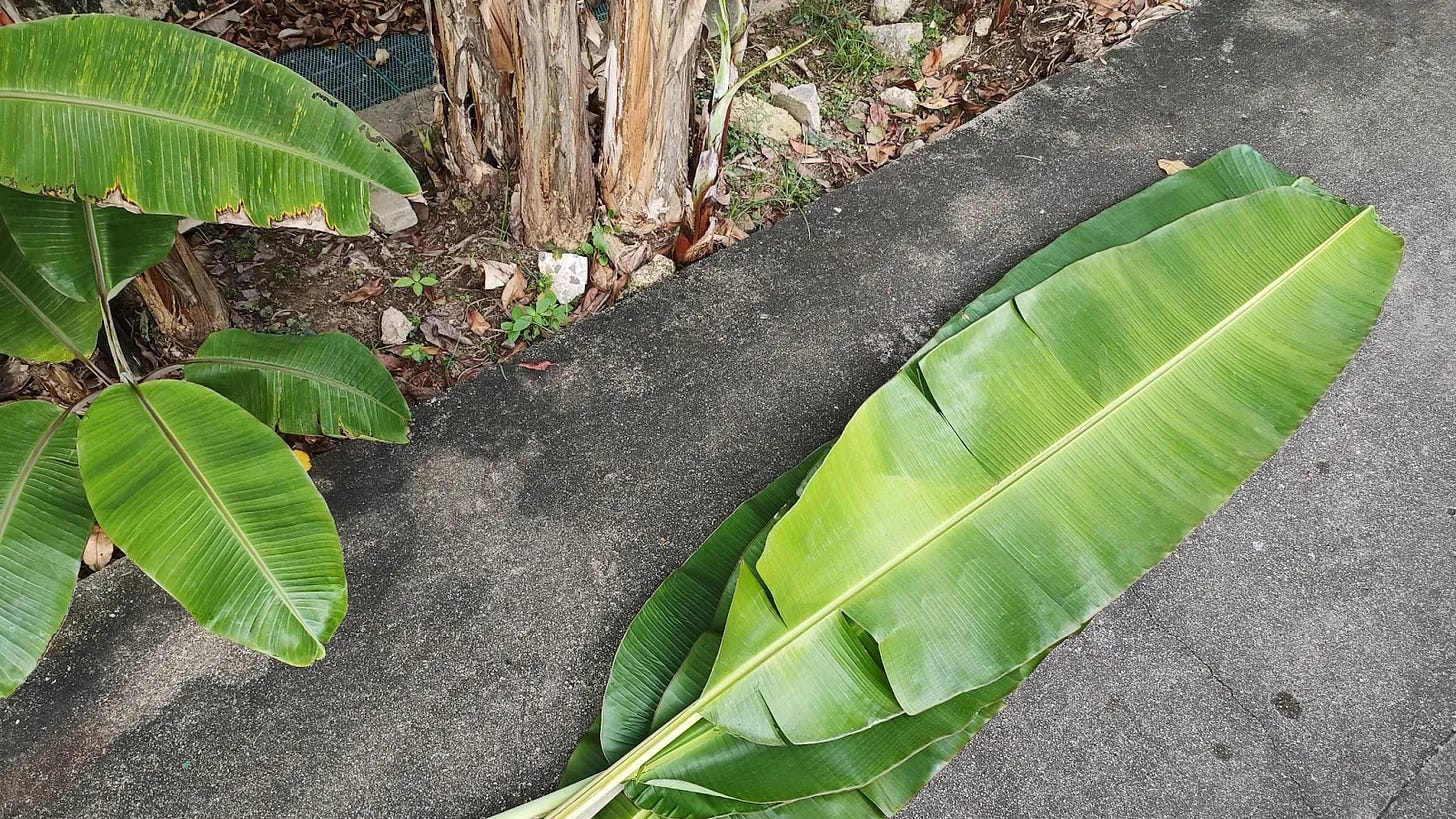


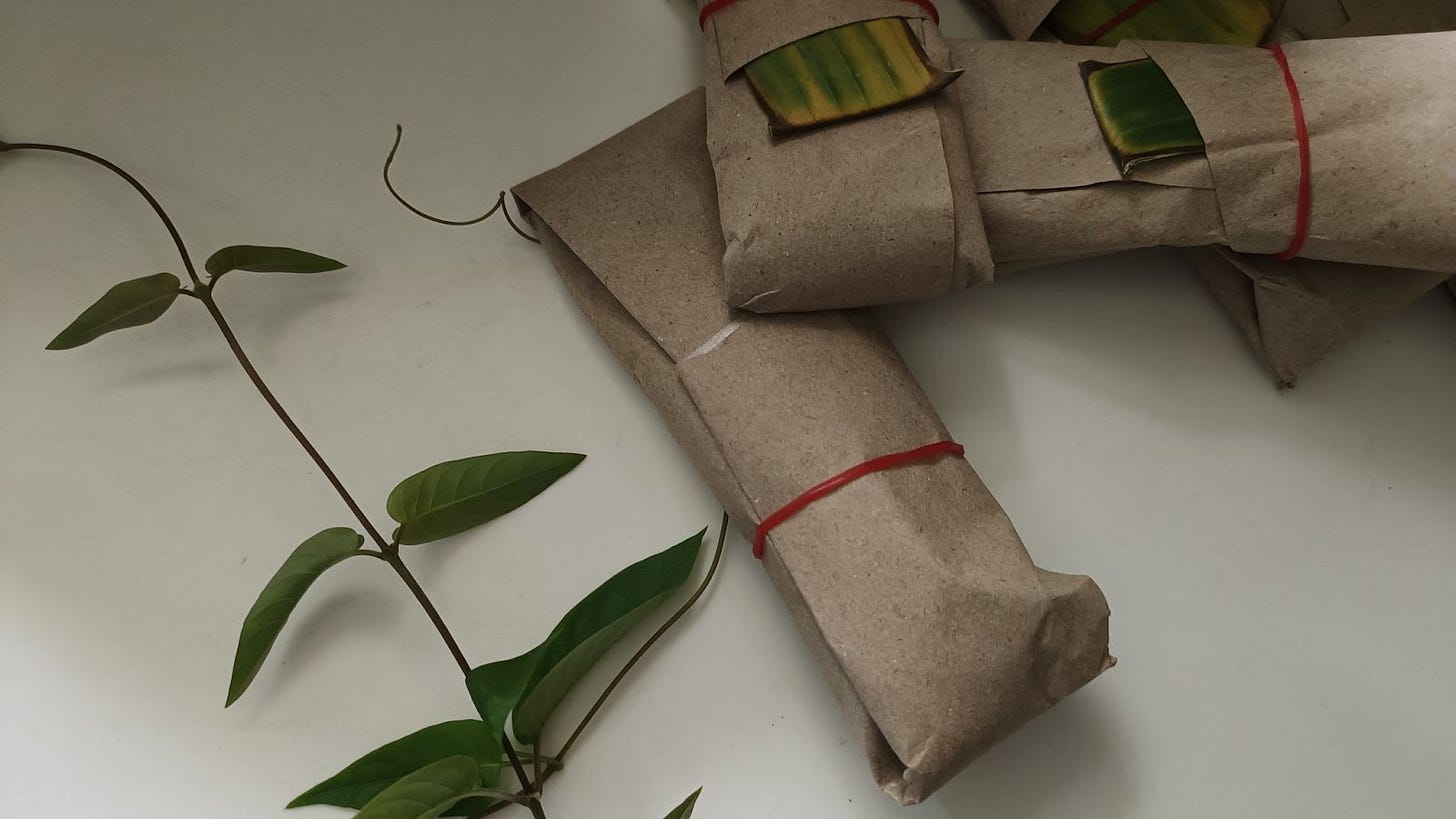




Such a pleasure to read this. When something is wrapped in banana leaves, it gives the meal a special flavour. That’s why my favourite type of nasi lemak - a classic Malaysia breakfast meal of rice, sambal and anchovies with nuts - is wrapped in banana leaves. It gives it a special flvaour.